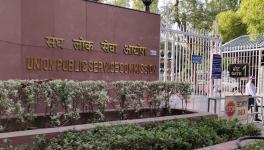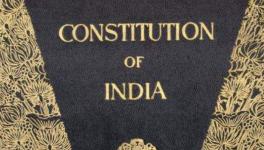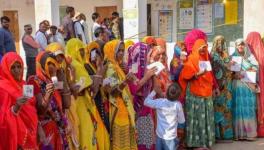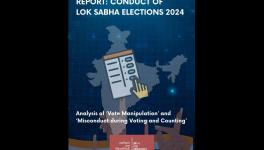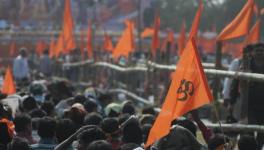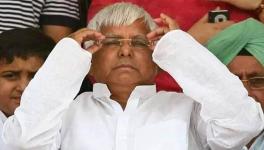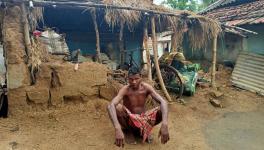Electoral Mobilisation as a Vehicle for a Rainbow Social Coalition
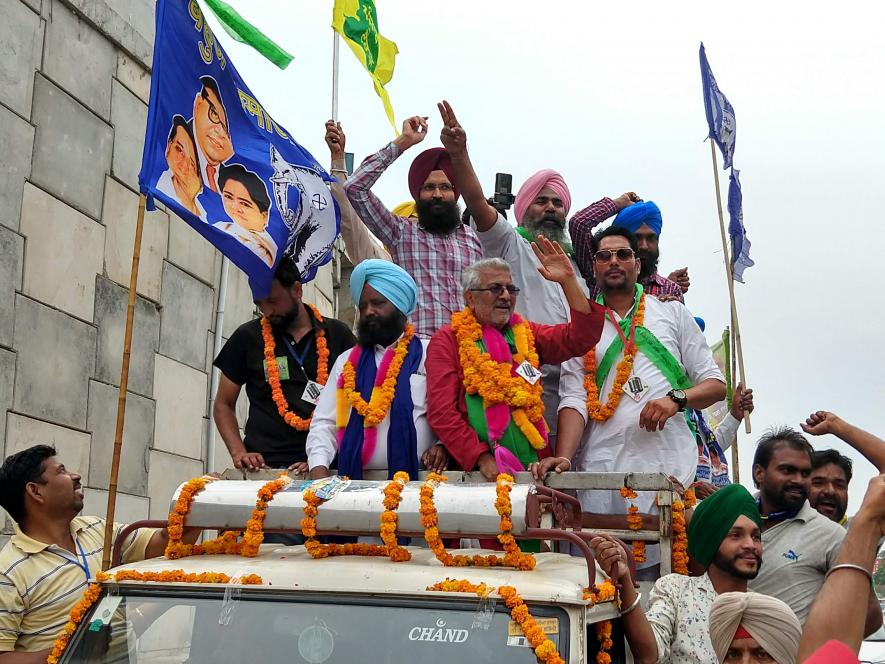
Elections are the most important assertion of popular will in India, and election campaigns are perhaps the most important means by which political groupings try to shape this popular will. The final votes have been cast for the 17th Lok Sabha. Before celebrations of the declared winners take over the national discourse, it is important to identify some little noted aspects of the recent election campaign, because they may contain seeds of the future.
If one were to go by the centrality of macho-nationalism and anti-minority Hindutva in the campaign of the dominant political party in the country, then it would appear that a significant section of Indians are eager participants in the 56-inch chest thumping nationalism and are baying for the country’s minorities. A counter, but weaker, electoral narrative in the populous Hindi belt is woven around caste coalitions specifically stitched for the current election.
However, at a few places, the election campaign also opens a window to alternative electoral mobilisations, which are neither based on the divisive agenda of aggressive nationalism, nor on caste politics, but on broad-based social coalitions that can be built.
One such campaign was that of Kanhaiya Kumar in Begusarai, Bihar. Here, Kumar’s campaign managed to galvanise the youth of the constituency across caste and religious divides. The Hindutva nationalist brigade has been vilifying and attacking Kanhaiya for the past three years. Yet, his principled ideological stand, garnished by very fine oratory, became the carrier of the hopes of Begusarai youth for cleaner public politics shorn of jingoism, narrow communitarian identities and money and muscle power.
Another such campaign was of Dharamvira Gandhi in Patiala, Punjab. Here, the campaign of a frail, 67-year-old cardiologist became the hope of the people for a clean politics which serves the people, rather than lording over them. Like Kanhaiya, Gandhi too has received support from a wide social spectrum, from articulate urban professionals to landless rural dalits, across caste and religious divide. His campaign has received little media attention. This is unfortunate, because this campaign also brings to the fore specific issues of a border state inhabited by a religious minority, and whose politics and society is significantly different from ‘mainstream’ North India.
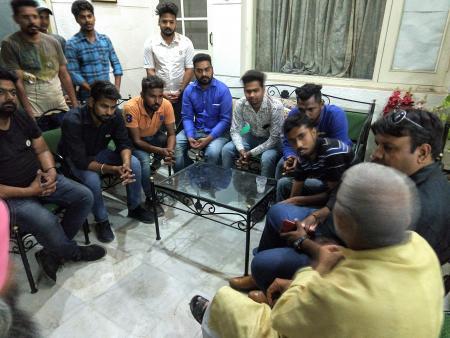
Gandhi is a sitting MP from Patiala. In 2014, he fought and won on an Aam Aadmi Party (AAP) ticket. He opposed the party central leadership’s treatment of Yogendra Yadav and Prashant Bhushan and was suspended from AAP. Even in 2014, his electoral success was as much based upon the AAP wave, as the widespread respect he had built over decades of medical care for poorer patients, and contributions to a number of popular agitations.
Since his student days in Amritsar Medical College, Gandhi’s ideological moorings lie in the radical Left recognition of multiple class exploitations in the state, as well as in the assertion of the rights of ordinary Indians as equal citizens of a democratic republic. He opposes the use of honorific Rani/Maharani in popular discourse for his main political rival Preneet Kaur of Congress, who is a member of the erstwhile royal family of Patiala and is married to chief minister Amarinder Singh, as a remnant of India’s feudal past which needs to be discarded.
The social characteristics of Gandhi’s campaign are rooted in the specific conditions of Punjab. The state has the largest percentage (32%) of dalits in total population than anywhere else in the country. Dalits continue to suffer multiple deprivations and discriminations. Like in other parts of India, rural dalits have no agricultural land. Notwithstanding assertions of the anti-caste origins of Sikhism, the fact remains that caste is an important parameter of social identity among Sikhs. It is not uncommon to have separate caste-based gurudwaras in rural Punjab. Many villages even have separate cremation grounds. The British thought it better to raise a separate Sikh Light Infantry regiment for recruiting dalit Sikhs, rather than take them in the Sikh Infantry, which even now under Indian Army recruits only Jat Sikhs.
The percentage of dalits in Punjab is more than the percentage of Jat Sikhs, the dominant land-owning social group in the state. However, while the latter dominate the social, cultural and political landscape of the state, dalits as a group have had little political success. The Bahujan Samaj Party (BSP) vote share in the 2017 Assembly elections was a mere 1.5%. Divisions along religious lines (40% reporting themselves as Hindus, 60% Sikhs), and significant regional and inter-caste variations mean that a pan-Punjab political space for dalit politics has not come into being despite their numbers.
Another feature of the current Punjab politics is the weakness of the savarna (upper) caste Hindus as an electoral force. Muslim rule seriously weakened brahmanical caste hierarchy in Punjab. The erstwhile ‘upper’ castes got mainly confined to trading and urban professions. The emergence of Sikhism, which has its roots going back to the Bhakti movement, further affected social dominance of these castes. The British took special care to legally protect the Sikh peasantry from Hindu moneylenders, as the former, believed to be a ‘martial race’, formed an important source of recruitment to the colonial Indian Army.
Social reform movements, such as the Arya Samaj, became important vehicles for savarna Hindus to discard older, religion-based forms of prejudice and domination and move towards more urban-based, ‘modern’ lifestyles. On the other side, movements like Ad-Dharam/Ravidasia among sections of dalits led to them creating an autonomous cultural and social sphere for themselves.
The Partition of 1947 and the militant movement for Khalistan later, led to the dispersal of savarna Hindus to other parts of the country. Savarna caste Hindus of Punjab remain economically prosperous, and have significant presence in professional strata, urban trading and state bureaucracy, but, as in some parts South India, they do not enjoy a corresponding influence in electoral politics. Hence, like anywhere else in India, the caste identity of Gandhi as a brahmin is noted by his supporters, but unlike in many parts of India, this identity does not get automatically associated with any form of existing politics. This opens up the space for recognition of the social work he has been doing.
These elections have come at the time of continuing agrarian crisis in Punjab’s economy, and a serious drug menace in society. In the 2017 Assembly elections, the incumbent SAD (Shiromani Akai Dal) government lost badly due to its failure to address these two issues. A promise from the Congress to alleviate the two helped it immensely. However, people’s belief in Amarinder Singh’s leadership has been seriously tested by his government’s failure on these two fronts in the past two years. The Narcotics, Drugs and Psychotropic Substances Act has criminalised drug use, and many users from poorer families are languishing in jails, while the business of drug mafias is flourishing as before.
The other major political force in Punjab, the SAD, is imploding ever since its drubbing in the last Assembly polls, when it could win only in 15 out of 117 seats. The SAD is closely associated with the Shiromani Gurudwara Prabandhak Committee, the apex body that manages gurudwaras. It’s core support comes from richer sections of the Jat peasantry. The current leader of the party, Sukhbir Singh Badal, appears to have failed to attract other popular classes to this core, something his father had successively managed for many decades.
The (Narendra) Modi ‘phenomenon’, so overwhelmingly seen in other parts of the country is nearly absent in Punjab. The aggressive Hindutva of the Modi variety has few takers even among the Hindus of Punjab. In fact, surprisingly for a state that went through the trauma of Partition, there is little animosity towards Pakistan. For example, during the Pakistan cricket team’s match against India in the 2011 World Cup, Pakistani fans were warmly hosted by many citizens of Chandigarh and Mohali, a scenario difficult to imagine in other cities of India.
Another facet of Punjab is its long-standing tradition of radical politics. Ghadari babas (Sikh soldiers of the British Indian Army who rebelled as part of the Ghadar movement during the First World War) and Bhagat Singh are part of the folklore. At present, many groups of the Left parties are active in peasant struggles, student movement and workers’ organisations. Awareness of their rights, and the proverbial Punjabi character to be not cowed down by authority and feudal barriers, has meant that agitations are a near permanent feature of Punjab society. Gandhi’s constituency Patiala most recently saw agitations by contract nurses in government hospitals and women students of Punjabi university.
To make maximum of the possibilities for progressive change in Punjab, a number of Left groups, human rights groups, Gandhi’s Nawan Punjab Party (New Punjab Party), and the BSP have come together to form a joint platform called Punjab Democratic Alliance (PDA). The minimum programme of the PDA calls for opposition to BJP’s ‘forced amalgamation into a ‘Rashtra’’, attacks on democratic rights of the people, and pro-corporate economic policies. It calls for strengthening the federal structure and opposes centralising the tendencies of both BJP and Congress. Its constituents present themselves as pro-Punjab and democratic. Among the Punjab-specific demands are the old ones of river water, control of headworks and Chandigarh, as well as promotion of Indo-Pak friendship and cross-border trade.
The current juncture of Punjab politics and social relations form the basis for the unique social coalition that Gandhi’s campaign has managed to stitch. His work as a sitting MP is the main weave of this stitch. His campaign called voters to compare his five years as an MP with the previous 15 years of Preneet Kaur of Congress. He spent all his MP Local Area Development funds on carefully targeted schemes of social welfare. More than half of this money of over Rs 13 crore was spent on providing benches for rural government schools. Only the children of poorest Punjabis go to these dilapidated schools. In the context of increased awareness of inter-class differences, this step sent out a clear message that Gandhi considers these landless poor, mainly from the dalit castes, as important for his kind of politics. A significant part of the remaining MPLAD money was spent on building common cremation grounds, which are open to all castes. This symbolic gesture hits at the base of caste segregation in the social imagery of rural Punjab. His participation and contributions to many agitations for popular demands in the past have contributed to forming a public persona of a principled politician not afraid to stand with people in distress who are willing to fight.
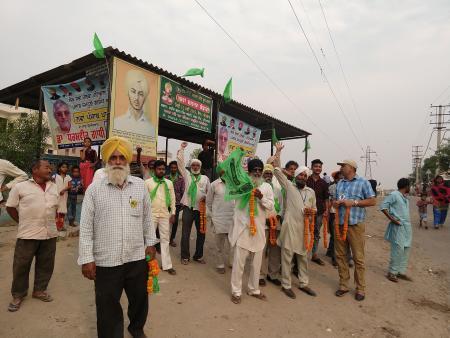
Hence, if the Congress has mainly played the politics of patronage, and SAD’s success is based upon mobilisations around Sikh religious identity and the social domination of the rich Jat peasantry in rural Punjab, Gandhi’s politics as an MP, and as a social activist, runs counter to both these longstanding strands of politics in Punjab.
Urban professionals see an ideal of their own image in Gandhi, a self-made, highly educated man, whose public life is driven not by desire for private profit, but genuine public welfare. Agitating peasants, workers and students see in him as a fellow agitator who is willing to use his political weight for their demands. Rural poor and discriminated dalits see in him a principled politician who does not merely mouth anti-caste platitudes but is willing to go an extra mile to challenge caste domination.
Whether the social coalition of Gandhi’s campaign is successful in his winning the Patiala Lok Sabha constituency is yet to be seen. Nevertheless, its very existence is proof that if properly nurtured and led, an alternative political discourse rooted in the republican principle of equal respect for every citizen, and which challenges caste segregation by material steps, is possible.
Aggressive nationalism, or caste-based electoral mobilisations are not the only possible futures for India. The novel, progressive content of this coalition lies in the absence of any non-hegemonic core i.e., a section which tries to build consensus around its chief demands. This may be the way out of the dead-end of populist fascism of the Bharatiya Janata Party, patronage-based populism of the Congress, and a fractious identity politics of SAD which cannot see beyond its narrow aims. The immediate future of this localised coalition is in the hands of the people of Patiala. Its reliance on an election campaign, and on a particular person, are its current weaknesses. But that is how seeds of future grow, they germinate only in very special contexts.
The writer teaches Physics at St Stephen’s College, Delhi. This article is based upon time spent with Dr Dharamvira Gandhi’s election campaign in Patiala. The views are personal.
Get the latest reports & analysis with people's perspective on Protests, movements & deep analytical videos, discussions of the current affairs in your Telegram app. Subscribe to NewsClick's Telegram channel & get Real-Time updates on stories, as they get published on our website.










